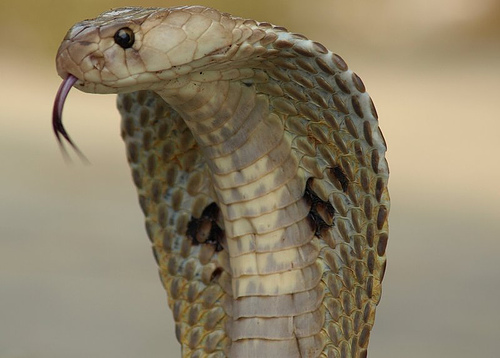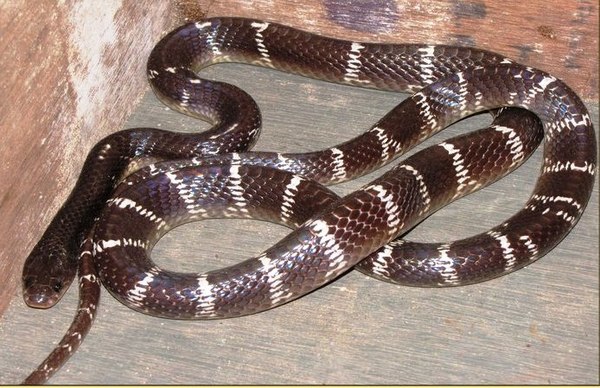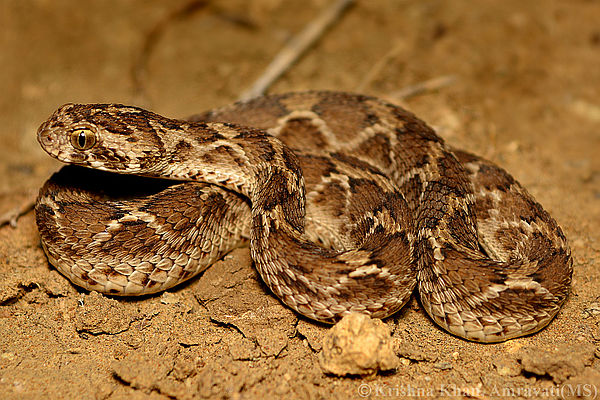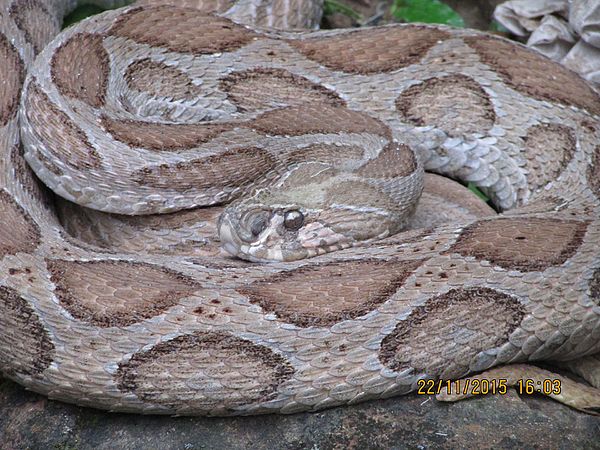Snakes in Whitefield
The city of Bangalore is continuing to spread its tentacles beyond what is considered “city limits”. Encounters with wildlife are inevitable as we encroach upon their habitat to build our own spaces. Residents of developing areas such as Whitefield tend to come into contact with wildlife more often than residents in the heart of the city. Sustainable conflict mitigation calls for knowledge and means to co-exist with wildlife within a given micro ecosystem, like Whitefield, such that no harm is caused to either humans or animals.
Chance encounters with wildlife in Whitefield are generally restricted to the following species:
- Birds such as black kite, crow, barbet, different species of owls etc.
- Mammals such as bonnet macaque and squirrels.
- Reptiles such as snakes and terrapins.
In all conflict situations involving the above said species, basic understanding of the animal behaviour and presence of mind is all that it takes to resolve the fracas and co-habitate. Of the above species, snakes have the highest frequency of conflict with humans resulting in relocation of the snake to another alien ecosystem which more often than not will result in its death. Resolution of conflict with snakes begins with understanding the species. Killing snakes is of no use in managing a situation of snakes in your area. If they have food sources (mainly rats and frogs), they will come.
Rapid development in areas like Whitefield leads to increased conflict with snakes. Snakes were never and will never be restricted to just the rural and wild areas of any locale. They are very commonly found in urban habitation which calls for a basic understanding of the species and to be appreciative of the role they play in metropolitan ecosystems such as Whitefield. Over 280 species of snakes found in India out of which less than 50 are venomous. Of these only 4 venomous species can be commonly found in Whitefield. Please note : Snakes do NOT drink milk. Snakes do NOT store a jewel in their head.
Manage Snake Population
- Deny Food
- Deny Shelter
- Deny Entry
- Translocation Tragedies: Are We Really “Rescuing” Snakes?
Identification of top 4 poisonous snakes

Indian Cobra 
Common Krait 
Saw Scaled Viper 
Russell’s Viper
Call below contacts if you see a snake
BBMP Hotline 080 2222 1188, Spurthy (7406079036, 9844530033), Mahesh (9916968959), Nagabhushan (9341240482), Vikay Nishanth (9972487991), Hiss Mohan (98450 80903)
Snake Management Home Measures Check list
Personal Safety Measures
1) Have you sensitized your home staff (Maid, Gardner and Driver) and family (especially kids) to the risk (danger to life) from snakes?
2) Have you instructed your home staff and family (especially kids) to adhere to following?
(a) NEVER EVER leave doors ajar (to allow snake to enter the house).
(b) NEVER EVER put hand or foot where one cannot see (examples, kids fetching ball from a bush or maid plucking flower).
(c) Exercise caution before putting shoes on from a shoe rack.
(d) Use torch/flash light while venturing out of the house in dark.
(e) Be attentive to keep distance between yourself and snake (at least 8-10 feet) at all times.
(f) In case if you find yourself in strike distance of a snake, DO NOT PANIC. Back out slowly and carefully. Avoid sudden movements. While backing out, drop an item of clothing (e.g. cap, shawl, etc. away from yourself to draw attention of snake away from you.
3) Do you have emergency contact information of area hospitals/ambulances prominently posted in the house and visible/accessible easily?
4) Do you have first aid box in the house?
3) Are you, your family and your home staff able to identify 4 venomous variety of snakes in Whitefield?
Home Safety Measures (Word “Home” refers to family residence, maid residence and storage areas).
1) Do you have rats/mice inside your house? If answer is yes, you are at severe risk to have snake inside your house. Do ALL it takes to prevent rats/mice inside the house.
2) Do you have pest control measures fully implemented in your home and backyard for rats and mice?
3) Do you make sure that your maid does not keep garbage bin inside the house uncovered at least overnight (Deny food for rats)?
4) Do you make sure that your maid does not leave unwashed dishes or food items lying around overnight (Deny food for rats)?
5) Do you have rats and rat burrows in your back yard? If so, have you instructed your Mali/Gardner to aggressively be on lookout for such burrows and keep closing them with pest control medicine?
6) Is your home (storage areas) and backyard clutter free? Any stone slabs, rocks, wooden logs, dirt mounds, pile of unused stuff and even garden furniture that blocks the view is a clutter and can provide hiding place to a snake.
7) Have you inspected your compound walls recently to look for any holes, crevices, cracks and gaps that can allow even a small snake (half centimeter thin) to get through? If so, have you closed all such access routes?
8) Have you inspected your home walls and window frames recently to look for any holes, crevices, cracks and gaps that becomes entry point of snake inside the house?
Some examples : A Gap under the door to the flooring, Air condition pipe holes, Cooking Gas, Cylinder pipe holes, Cable and/or dish connection wires, Washing Machine Water outlet, Kitchen water outlets, Bathroom water drainage, etc.
9) Are ALL open windows (ground floor and first floor including bathroom windows) secured with mesh to prevent snake entry point?
10) Have you instructed family and maids to not leave bathroom doors and commode lids open?
11) Have you instructed family and maids to be little alert especially at night while lifting commode lid for bathroom use?
12) Have you recently had water channel on the roof inspected to clean of clutter? Damp collection of dry leaves can provide nesting site for snake to lay eggs. Tall trees provide access route.
13) Is your roof and overhead tank area free of debris (e.g. construction debris left behind)?
14) Have you cleared space within 8 feet of your front, back and kitchen doors of any objects that block view? For example, shoe rack, flower pots, etc.
15) Do you toss garbage or does your Gardener/Mali toss green waste over the compound wall? If so, please, stop this practice as this attracts rodents near compound wall.
16) Do you have any type of storage on the ground? If so, move storage of boxes, containers, etc. above the ground on a stand. This eliminates potential hiding places for snakes.
17) Have you checked the metal drainage cover recently? If they are rusted and have holes, rats/ rodents/snake can enter to your bathroom through this route.
18) Does your back yard and front yard walk paths have adequate lighting for family and home staff to be able to spot a snake and avoid accidental stepping on after dark?
Pet Safety Measures
1) Do you leave your pets unattended in backyards or without leash to roam free outdoors? If so, please, don’t.
2) Do you constraint your pet in a way that it cannot get away from approaching danger?
If so, please, don’t. Freedom to move around at least 8 to 10 feet is crucial to avoid snake bite.
3) Have you trained your pet to understand danger and keep distance from snake with use of a rubber snake and hissing sounds (online audio clips)?
Green Foliage
1) Have you removed all pots and plants within 5-8 feet of doors and open windows (without mesh) that block visibility?
2) Have you removed all creepers in balconies (in front and back yards) to eliminate snakes’ access route to higher floors?
3) Have you removed all creepers that go across your compound wall? These give access route to snakes to come inside.
4) Have you removed types of landscaping plants from your front and back yards that attract birds to nest (birds eggs and chicks are food for snakes) and snake to take shelter? These are A thick shrubs, bamboo plants/trees, ground creepers, plants and trees with dense canopy (one example is Ficus). Any type of vegetation that prevents see through or sunlight to go through is ideal for sheltering snake.
5) Do you keep many flower pots or potted plants in containers that are densely placed adjacent to each other? If so, this creates space for snake to hide. Space out pots such that to not create any hiding place.
6) Do you have lawn extending all the way to entrances of the house? If so, create clearance of at least 8-10 feet to prevent accidental exposure.
7) Do you have hedges in front yard and back yard that are trimmed at least a foot about the ground to create clearance so that there is no hiding place?
In case of a snake bite
- Until ambulance arrives, one may take following measures of First-aid:
- Keep victim calm and restrict movement. With increased heart-rate, venom spreads faster in the blood.
- Make sure victim does not panic. Often, panic causes more complications to symptoms and situation.
- Position victim such that area affected by bite is below the level of heart. With use of pillows, etc. keep level of heart higher than level of bite location.
- DO NOT do any of following
- DO NOT Apply tourniquet
- DO NOT Suck the wound manually (with mouth) or through a machine
- DO NOT Apply any pressure to the bite site
- DO NOT Give alcohol or warm beverage to the victim
- DO NOT Cut the wound
- DO NOT Cover the bite wound
- DO NOT Burn the wound or apply burned cotton
- DO NOT Rub the wound
More information at http://whitefieldrising.org/blog/cohabiting-with-snakes/ If you need any further information please write to us at – hello@whitefieldrising.org
WHAT TO DO IF BITTEN BY A VENOMOUS SNAKE?
Living with Snakes – Printable Poster

